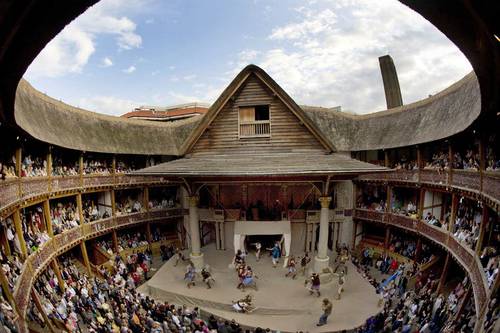Art has always been about conveying a message and not just a form of entertainment or perhaps it’s a combination of the two. It could be a simple emotion or a thought, but its manner of deliverance by the artist is what entertains the audience. One could convey these emotions through writing or music but what could be a better medium of expression than the very origin of expressions; the human visage. With its many distinct lines, the face is the very reflection of the human mind’s universe. A good writer may bring you to sympathize with his protagonist whereas a good actor brings you to empathize with his character and herein, lies the speciality of theatre drama.
We all know theatre to be a form of art, and so are music and literature. But what we don’t realise is that all these art forms thrive on something not often recognised as an art in itself, the art of criticism, or in other words ‘The art of appreciating an art’. It is a privilege reserved for the audience and whose upholding enriches not only the artist, but also their craft. With the death of this critique in the audience’s minds, comes the death of the art form itself. Not a sudden death per say, but a process of gradual decay into oblivion.
The contemporary representation of theatre art has taken the form of motion pictures which are adapted into films or series. They are then screened in cinemas or can be streamed on OTT platforms such as Netflix, Hulu etc. which are becoming increasingly popular especially now that everyone is restricted to their houses. In the last quarter alone Netflix had added around 10 million subscribers, adding to a total of over 182 million subscribers worldwide.
A number only likely to increase over time and while the number of cinema goers has certainly seen a dip, it is nowhere close to becoming irrelevant in today’s time. Now, these being platforms for the art of theatre, their popularity should only serve to prove the status and relevance of the former. However, is it truly the art being reflected in the content these platforms have to offer?
Sure, they do have a knack for the art of making people and objects fly around i.e. special effects and the art of heavily romanticising and sexualising content but what exactly is the emotion or the idea being conveyed here? Which is after all the very essence of the art of theatre or any other art form for that matter. Now for instance let’s take a Rajnikanth film, a Salman Khan film or a film from Hollywood, like those from the Fast and Furious franchise, what do they all have in common? Elaborate action sequences defying the laws of physics; sexualising and objectifying female characters to the extent that they are brought in specifically for that purpose, and most importantly, no genuine plot whatsoever.
Yet they’ve all managed to pull off a successful box office run. Now I’m not saying that for a film to embody the art of theatre, it should be devoid of special effects or any unrealistic elements. The franchise of Marvel, despite being based on humans with superhuman strength, futuristic technology and an extensive universe beyond earth, have still managed to make all age groups and genders weep, with the death of Iron Man. And this was not because he was Iron Man, but for the man he was underneath the armour. A character arc which saw the transition of a self-centred billionaire who never believed in taking the fall for someone else, to somebody who eventually goes on to sacrifice himself for the greater good of humanity.
It seems over the period of time entertainment which was merely a by-product of art took over as a replacement for the art itself. Elements such as glamour or special effects which were meant for better conveying emotions or ideas ended up becoming the highlight themselves - From a point in time when men played female roles not because they looked the part but because they could act the part ; to a time where beauty pageant winners and models are often being cast because of how they look and not necessarily because they possess the skills necessary for the craft. This transition shows how theatre, as we know it today, has become less of an art and more of a show business. And so, despite the ever-increasing popularity of the many platforms for aspiring actors, it can be said that theatre as an art continues to remain underappreciated.
Now coming to the question as to what led to this transition, the answer is fairly simple: ‘Supply continues as long as demand exists’. As mentioned earlier, we, the audience have been bestowed with the special privilege of playing the role of a critic and when this critic in them dies, so does the art. So to put it simply, we haven’t played our roles as fair judges well enough and as long as we continue to indulge ourselves in the glitz and glamour, yet depth-lacking content we are being fed, they will continue to feed us the same. All we have to do is show our support for the right kind of content and their creators. For while majority of the industry has taken to show business, there are still those who pursue theatre for the emotionally rewarding art it is. Therefore, we have the responsibility to not be so quick to hang up the mantle of critiquing. I mean honestly how hard could it be - all you have to do is grab a seat and some snack, but for the right screen with the right movie on it.





